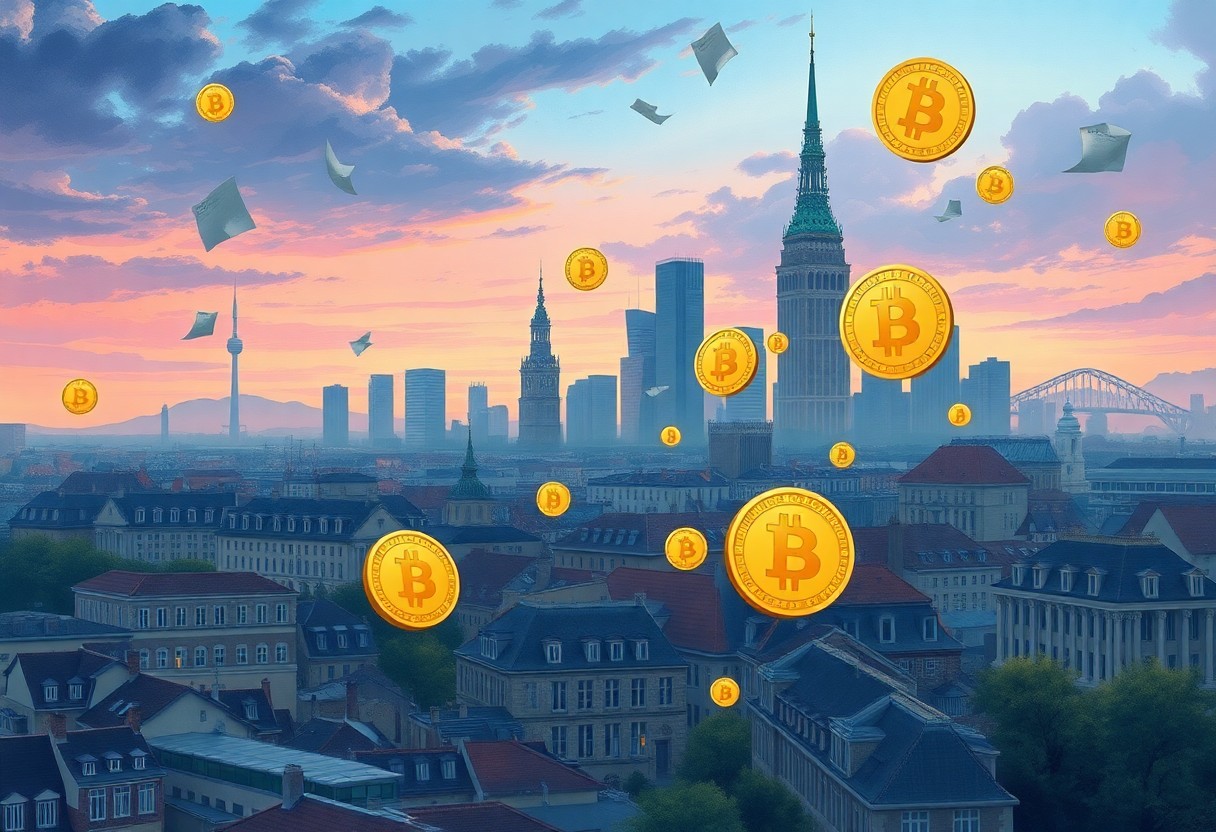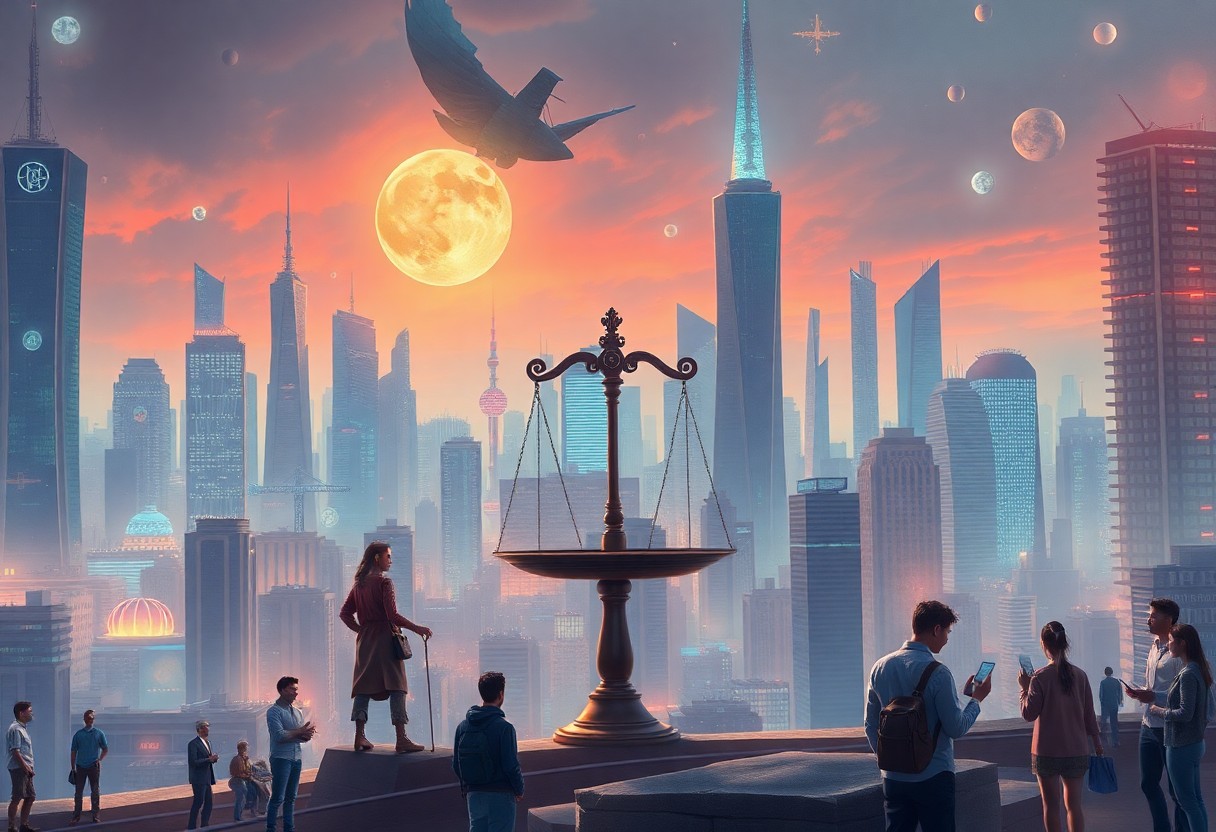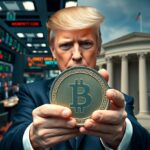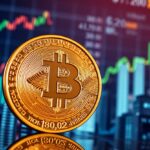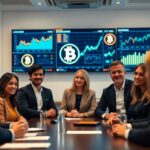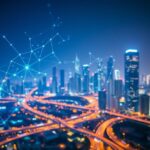Now Reading: Exploring AI-generated NFTs – A new trend in digital art?
-
01
Exploring AI-generated NFTs – A new trend in digital art?
Exploring AI-generated NFTs – A new trend in digital art?
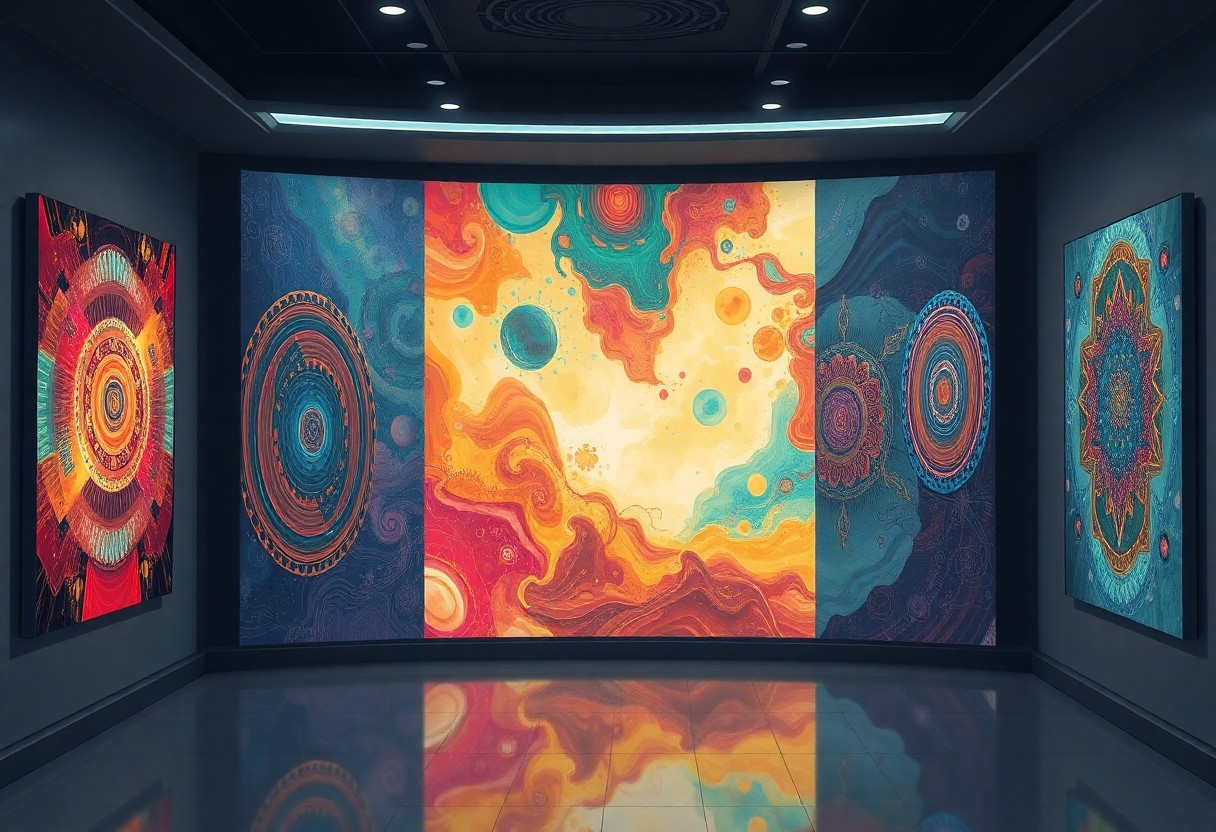
You may have heard about the rising popularity of AI-generated NFTs in the digital art world, but do you understand their significance? These unique digital assets created by algorithms are reshaping how you perceive art and ownership online. With the potential to democratize art creation, they also introduce challenges like authenticity and copyright disputes. Delve into the fascinating intersection of technology and creativity in this trend, and for more insights, check out Exploring AI-Generated Crypto Art and NFTs.
Key Takeaways:
- AI-generated NFTs are rapidly gaining popularity, showcasing how technology is transforming the landscape of digital art.
- The creative process in AI-generated art involves algorithms and machine learning, allowing artists to collaborate with technology.
- Ownership and authenticity in the digital realm are redefined through NFTs, providing a unique way to verify the originality of AI-generated work.
- Investors are increasingly viewing AI-generated NFTs as viable assets, creating a blend of art and finance that attracts collectors.
- The future of AI-generated art lies in its evolution and potential integration into various sectors, reshaping how we perceive creativity.
Understanding NFTs
A non-fungible token (NFT) is a unique digital certificate that verifies ownership of a specific digital asset, often stored on a blockchain. NFTs stand out from cryptocurrencies like Bitcoin or Ethereum, which are fungible and can be exchanged for one another. This unique feature allows NFTs to represent ownership of not only digital art but also music, videos, and virtual real estate, leading to a burgeoning marketplace for creators and collectors alike.
Definition and Technology
Beside serving as proof of ownership, NFTs employ blockchain technology to securely record transactions and ensure the authenticity of digital assets. Each NFT contains distinct information that makes it irreplaceable, allowing artists to monetize their digital creations and buyers to invest in verifiable, one-of-a-kind items.
Market Dynamics
At the forefront of the emerging digital economy, the NFT market has witnessed significant fluctuations recently. Artists and collectors are drawn to the potential for major profit, yet caution is warranted due to the market’s volatile nature. Many different factors contribute to pricing, including scarcity, artist reputation, and trends, which can significantly impact your investment outcomes.
In fact, the NFT market’s dynamics are shaped by a blend of enthusiasm and uncertainty. The rapid rise in demand for NFTs has resulted in skyrocketing prices for some digital assets, enticing new investors. However, this lack of stability and the potential for quick losses must be carefully weighed against any potential gains. You must also consider the implications of environmental impact, as the blockchain technology behind NFTs can consume substantial energy resources. As you explore this space, understanding these market forces and trends is necessary for informed participation in this exciting yet unpredictable landscape.
The Rise of AI in Art Creation
While technology continues to advance at a remarkable pace, the incorporation of artificial intelligence into art creation has sparked a revolution in the digital landscape. Artists and technologists alike are now exploring how AI can serve as a creative partner, pushing the boundaries of traditional art forms and providing innovative ways for you to engage with art. This synergy not only redefines artistic expression but also invites you to consider the implications of machine-driven creativity in our culture.
AI Algorithms and Techniques
With a variety of AI algorithms and techniques, artists can now generate unique works of art, harnessing the power of data and machine learning. Popular methods include generative adversarial networks (GANs) and neural style transfer, which allow you to create images that blend various artistic styles seamlessly. These techniques provide you with tools to explore your creativity, as AI offers endless possibilities for expression that were previously unimaginable.
Notable AI-generated Artworks
AI-generated artworks have captured significant attention, demonstrating the potential of machine creativity. You may have heard of pieces like “Edmond de Belamy,” a portrait created by GANs that commanded a staggering auction price. Additionally, algorithms like DALL-E and Artbreeder have opened up numerous avenues for artistic exploration, allowing you to generate visually striking images based on your own prompts and preferences.
But the impact of notable AI-generated artworks extends beyond mere aesthetics. They raise important questions about ownership, authenticity, and the evolving role of the artist in a world where machines can create. While AI can enhance creative possibilities, it also poses risks, such as the potential for copyright infringement and the dilution of human artistry. As you navigate this evolving landscape, consider how you can engage with these works while being mindful of the ethical implications that arise from the intersection of art and AI.
The Intersection of AI and NFTs
Unlike traditional art forms, AI-generated NFTs represent a fascinating synthesis of technology and creativity. This innovative approach is transforming the digital art landscape, enabling artists to push boundaries and redefine artistic expression. As highlighted in AI Generated NFTs Simplified: Grow NFT Art Marketplace …, AI algorithms can create unique works that are verifiable and tradable in the NFT marketplace, offering new opportunities for both artists and collectors alike.
How AI Enhances NFT Creation
The integration of AI in NFT creation enhances the artistic process by providing unique tools for artists. Leveraging machine learning algorithms, artists can generate complex designs, explore various styles, and even create custom NFTs personalized to individual buyers. This synergy boosts creativity, allowing for innovative outcomes that would otherwise be unattainable.
Case Studies of AI-generated NFTs
With the growing popularity of AI-generated NFTs, several case studies highlight their impact on the market:
- DeepDream – Generated over 10,000 unique pieces, with some selling for up to $200,000.
- Art Blocks – Engaged over 150 artists, creating thousands of unique artworks, totaling over $1 billion in sales.
- Obvious – Their AI-generated piece “Edmond de Belamy” sold for a staggering $432,500 at auction.
Due to the rapid growth of AI in the NFT space, you may encounter striking results that demonstrate the potential of technology in art. These case studies reveal how AI can drive innovation, offering unique artworks that cater to varying aesthetic preferences while transforming market dynamics. Average prices for AI-generated pieces have soared, indicating a burgeoning interest from collectors. As you explore this market, keep an eye on how AI continues to reshape your experience with digital art.
Legal and Ethical Considerations
After the emergence of AI-generated NFTs, you must navigate a complex landscape of legal and ethical issues. The technologies that create these digital masterpieces challenge existing frameworks, prompting questions about ownership, copyright, and the responsibilities of creators and collectors alike. Understanding these considerations is crucial to engage with this innovative art form responsibly.
Copyright Issues
Across the globe, copyright laws are struggling to adapt to the rise of AI-generated content. You may wonder who owns the rights to an artwork produced by an algorithm: the programmer, the user who initiated the generation process, or perhaps the technology itself? These uncertainties can lead to legal disputes that complicate the acquiring and selling of NFTs.
Ethical Implications
Among the paramount ethical concerns is the impact of AI-generated art on human artists. You might be questioning whether these tools undermine the value of traditional artistic skill or if they could redefine the art community altogether. AI’s ability to replicate styles or create artworks deemed valuable raises questions about authenticity and originality.
In fact, the rise of AI-generated NFTs may lead to serious implications for human artists, prompting feelings of anxiety and displacement. As you explore this realm, consider how these automated systems can potentially stifle creativity by overshadowing unique human perspectives. Conversely, this technology might also promote collaboration between humans and machines, offering new platforms for expression and innovation. Balancing these dynamic factors becomes critical in shaping the future of digital art.
Impact on the Art Community
Despite the controversies surrounding AI-generated NFTs, their emergence has undeniably impacted the art community. This technology challenges traditional notions of creation and ownership, prompting discussions about artistry’s definition. As AI democratizes art production, it may provoke an identity crisis among artists, blurring the lines between creator and consumer, while simultaneously fostering innovation and collaboration.
Reactions from Traditional Artists
Reactions to AI-generated NFTs from traditional artists have been mixed, with some expressing skepticism and others embracing the novelty. Many artists worry that AI diminishes the personal touch of human creativity, potentially overshadowing their work. Conversely, a subset sees AI as a valuable tool for enhancing their practice, allowing for new forms of expression and exploration.
New Opportunities for Emerging Artists
Artists are finding new opportunities in the rise of AI-generated NFTs, leveraging technology to carve out unique niches in the digital art scene. With the accessibility of AI tools, you can experiment with *innovative techniques* and reach larger audiences online, positioning yourself to *capitalize on market trends*. This shift not only incentivizes your creativity but also opens doors for potential collaborations with tech developers, galleries, and platforms that support emerging art forms.
This shift in the art landscape signifies a *transformative moment* for aspiring artists. By embracing AI technology, you can enhance your artistic expression while tapping into the burgeoning NFT market. The potential for *greater visibility* and *monetization* allows you to showcase your work to a broader audience. However, it’s vital to *navigate this evolving space cautiously*, as ethical considerations around authorship and originality become more prominent. Engaging with AI can be a double-edged sword; while it offers *new avenues for growth*, it also presents challenges that could redefine your practice.
The Future of AI-generated NFTs
Your exploration of AI-generated NFTs invites you to consider a transformative future where creativity and technology merge seamlessly. As these digital assets continue to evolve, you may find that artists embrace AI to push traditional boundaries, resulting in captivating, interactive experiences. With the ongoing rise of blockchain integration, your engagement with AI art could redefine ownership and authenticity in ways previously unimaginable.
Trends to Watch
Any art enthusiast should keep an eye on the increasing collaboration between artists and AI developers. This trend is creating unique opportunities for hybrid art forms, blending human creativity with machine learning algorithms. Additionally, you’ll likely see a surge in community-driven platforms where collectors can interact and co-create, enhancing the overall value and experience of AI-generated NFTs.
Potential Challenges
Along with the excitement of AI-generated NFTs, challenges such as copyright issues and the authenticity of creative expression arise. You may find that debates over ownership blur the lines between artist and machine, potentially complicating the market. Furthermore, the environmental impact of blockchain technology remains a topic of concern for sustainability.
Hence, when navigating the landscape of AI-generated NFTs, you should be aware of the implications of copyright infringement and authenticity that often accompany these innovations. As more artworks are produced algorithmically, the definition of authorship becomes increasingly murky. Furthermore, the environmental burden of blockchain transactions cannot be overlooked; there is a growing movement advocating for eco-friendly technologies to mitigate these effects. A balanced understanding of these challenges will empower you to make informed decisions in this rapidly changing artistic domain.
Summing up
With this in mind, exploring AI-generated NFTs opens exciting opportunities in the digital art landscape. You can engage with cutting-edge technology that blends creativity and innovation, allowing your collection to stand out. As this trend evolves, it’s crucial to stay informed about the implications for art ownership, originality, and market value. Embrace the journey into this fascinating intersection of art and technology, as it reshapes the future of creativity and your role within it.
FAQ
Q: What are AI-generated NFTs?
A: AI-generated NFTs are digital artworks created with the assistance of artificial intelligence algorithms. These pieces are unique and embedded with metadata that certifies them as non-fungible tokens (NFTs) on a blockchain. The process typically involves training AI on existing artworks or styles, which then generates new, original pieces that can be bought, sold, or traded on various NFT marketplaces.
Q: How do AI-generated NFTs differ from traditional digital art?
A: The main difference lies in the creation process. Traditional digital art is created by human artists using digital tools, while AI-generated art uses algorithms to produce artworks autonomously or with minimal human input. This opens up new possibilities for creativity, as AI can incorporate diverse styles and techniques, often producing unexpected results that differ from traditional artistic methods.
Q: What are the benefits of investing in AI-generated NFTs?
A: Investing in AI-generated NFTs can offer several advantages, including unique ownership of digital art that is verified through blockchain technology. Additionally, these NFTs often have high levels of novelty and creativity, attracting collectors who appreciate innovation. As the intersection of art and technology continues to evolve, there may be potential for significant appreciation in the value of these digital assets over time.
Q: Are there ethical considerations surrounding AI-generated NFTs?
A: Yes, there are ethical considerations to address, such as authorship and originality. Questions arise about who owns the rights to an AI-generated piece— the programmer, the user of the AI, or the AI itself. Furthermore, the data used to train AI may come from existing artworks, raising concerns about copyright infringement and the potential dilution of human artistic expression. Engaging in discussions around these topics is important as the trend grows.
Q: How can someone get started with purchasing AI-generated NFTs?
A: To begin purchasing AI-generated NFTs, one should first create a digital wallet that supports cryptocurrency transactions. Next, familiarize yourself with NFT marketplaces such as OpenSea, Rarible, or Foundation, where these NFTs are often sold. It may also be beneficial to research specific AI artists or projects and explore community discussions to gain insight into trends and hot items in the market. Once you’re equipped with knowledge and a wallet, you can start investing in AI-generated art that resonates with you.












